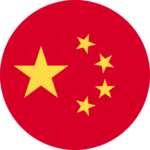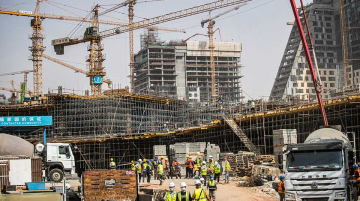
By Oyintarelado (Tarela) Moses
Chinese lenders participating in the Belt and Road Initiative (BRI) conduct business within a broader ecosystem of financing for development. This complex web of actors work in a coordinated credit space, comprising development finance institutions, commercial banks, companies, private investors, and investment insurers, to name a few. These institutions’ contributions are meant to address vast infrastructure and green financing gaps needed to achieve the UN 2030 Sustainable Development Goals (SDGs) in the Global South. By now, some may be able to recite these financing gaps by heart: to reach SDG targets by 2030, an additional $1.4 trillion or 2 percent of global gross domestic product (GDP) is needed annually for core infrastructure investment, and roughly $700 billion per year of climate finance is required to reach net-zero emissions by 2050.
The $160 billion loan commitments made by Chinese policy and commercial banks to African governments from 2000-2020 have contributed to addressing these financing gaps. In the post-pandemic era, Chinese institutions are poised to continue contributions with the encouragement of more diverse financing avenues for infrastructure and an emphasis on greening the BRI. However, Chinese loans to Africa have declined since 2016, or 2013 when excluding Angola. If this trend continues, the shortage of resources for financing infrastructure and a green transition in the region will grow.
With direct lending in a current lull, what can China do to bolster financing options in Africa?
One way is to encourage Chinese lenders and investors to expand avenues of cooperation with financing institutions outside of China. In a form of triangular cooperation, Chinese institutions could join with institutions in the Global North and South, including institutions in Africa, to support financing development projects in the Global South.
To some extent, this cooperation already takes place. In 2020, China established the Multilateral Cooperation Center for Development Finance (MCDF), a multilateral platform linking the BRI with China’s Ministry of Finance and eight multilateral development banks, including the Corporacion Andina de Fomento (CAF), the Inter-American Development Bank (IDB) and the World Bank Group. MCDF is a multilateral financing mechanism that aims to complement other initiatives and support the implementation of SDGs, the G20 Quality Infrastructure Principles, and the Paris Agreement.
On the institutional level, there are also levels of cooperation, including a cooperation MOU signing between the China Development Bank and the Agence Française de Développement (AFD) in 2018, which later led to co-financing the Hann’s Bay Sanitation Project in Dakar, Senegal. Co-financing between the Western-led Asian Development Bank and the China-established Asian Infrastructure Investment Bank has also taken place in previous years, but the regional focuses of these banks mean not much has been provided for African countries yet.
Given these existing avenues for cooperation, new collaborative mechanisms should be established to support financing for development in Africa. More cooperation in the region between Chinese financial institutions and African- and Western-led institutions would be beneficial for both host countries and development institutions. Cooperation in the form of co-financing and establishing joint funds, similar to the Africa Growing Together Fund, would pull financing from multiple sources to increase capacity for investing in new projects. It could also help lenders and investors share project risks (e.g., commercial, political and technology risks) and exchange best practices on financing standards. Collaboration with regional banks would create opportunities for increased information sharing on successful financing instruments and the region.
Skeptics may say these calls for greater cooperation with China are overly optimistic at best, and naïve at worst. However, China’s recent cross-ministry guidance on BRI green development strikes a remarkably positive tone towards cooperation with both the Global South and North.
Increased cooperation with China may take some convincing for Western multilateral and bilateral institutions. However, given the vast financing gaps, it would be expedient to set aside geopolitical constraints to support an infrastructure and renewable energy foundation for achieving the SDGs.
Oyintarelado (Tarela) Moses is the Data Analyst and Database Manager for the Global China Initiative at the Boston University Global Development Policy Center.








